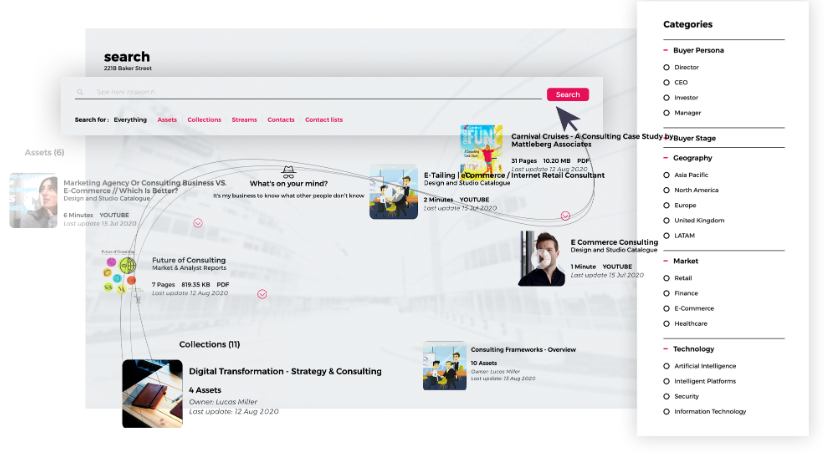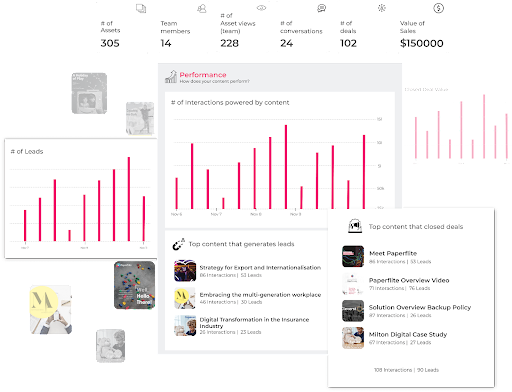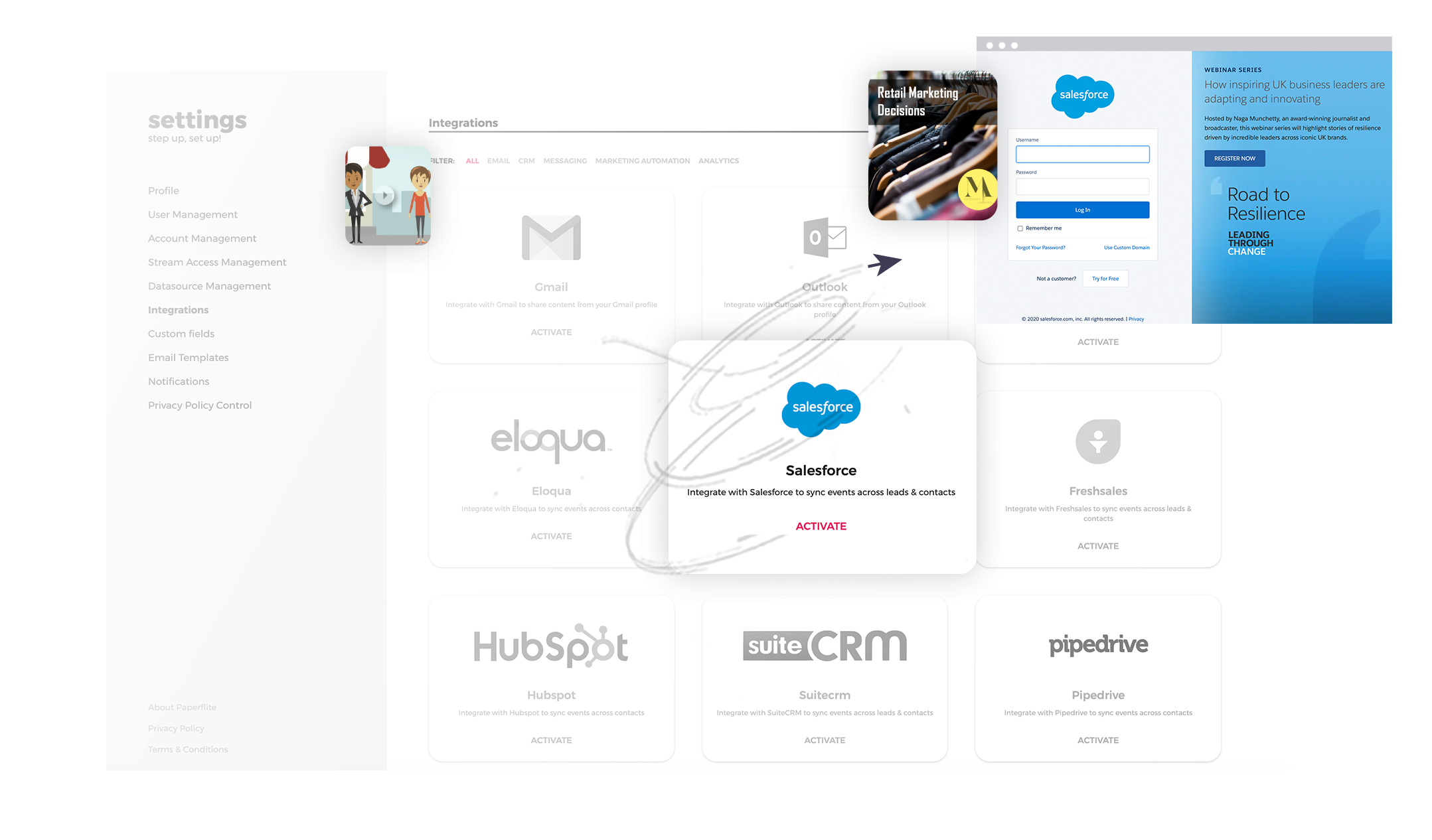How to create the best digital asset management strategy?
Discover the power of a DAM strategy, build it effortlessly, and reap the benefits: Elevate your organization's asset management game.
You're scouring through a never-ending pile of digital assets, trying to find that one golden piece of content that'll take your marketing strategy to the next level. But alas, it's nowhere to be found. Frustrating, right?
Gone are the days of desperately searching for that one elusive piece of content. With DAM, you'll effortlessly organize, store, retrieve, and distribute your precious assets.
Say goodbye to chaos and hello to streamlined workflows, enhanced collaboration, and brand consistency. Oh, and did I mention it'll save you from those dreaded risks and optimize your budget too?
So buckle up and join me on this journey as we delve into the key stages, steps, and mind-blowing benefits of implementing a top-notch DAM strategy. Trust me, your future self (and your sanity) will be forever grateful. Let's do this!
Three stages of digital asset management strategy:
The stages of a DAM strategy are crucial for its successful implementation. These stages provide a structured approach to ensure that the strategy meets the organization's specific needs and goals.
Each stage serves a distinct purpose and contributes to the overall effectiveness of the DAM strategy.
By going through these stages, organizations can assess their current situation, plan for the future, select appropriate solutions, implement them effectively, and continuously evaluate and optimize the strategy over time.

Stage 1: assessment and planning
During the assessment and planning stage of a DAM strategy, several key processes are involved to ensure a solid foundation for implementation. Let's break it down into the following points:
Define Clear Goals and Objectives:
- Establish clear and specific goals and objectives for the DAM initiative.
- Align these goals and objectives with the organization's overall vision and objectives.
- Ensure that the DAM strategy contributes to the broader business strategy.
Analyze Existing Asset Management Practices:
- Evaluate and analyze the current asset management practices within the organization.
- Identify any gaps, challenges, or inefficiencies in the existing processes.
- Recognize areas for improvement and enhancement to optimize asset management workflows.
Conduct Comprehensive Asset Inventory:
- Perform a thorough inventory of all digital assets within the organization.
- Categorize and classify assets based on types, formats, usage, and ownership.
- Understand the scope and nature of the assets that need to be managed within the DAM system.
Identify Stakeholders and Their Needs:
- Identify the stakeholders involved in the DAM strategy, such as marketing teams, creatives, and IT departments.
- Engage with stakeholders to understand their specific needs, requirements, and pain points.
- Tailor the DAM strategy to address the unique needs of each stakeholder group.
Stage 2: Implementation and Organization
During the implementation and organization stage of a DAM strategy, various processes are involved to establish an efficient and organized DAM system.
Establish Folder and File Structure:
- Design and implement a logical folder and file structure within the DAM system.
- Organize assets based on relevant categories, projects, departments, or any other meaningful criteria.
- Ensure consistency and clarity in the structure to facilitate easy navigation and retrieval of assets.
Implement Metadata and Tagging Systems:
- Define and implement a metadata framework to capture relevant information about assets.
- Assign descriptive metadata such as titles, descriptions, keywords, and copyright information.
- Establish a tagging system to label assets with specific attributes, making them easily discoverable through search queries.
User Training and Adoption:
- Provide comprehensive training to users on how to effectively use the DAM system.
- Educate users on best practices for asset management, metadata input, and search techniques.
- Foster user adoption by highlighting the benefits and efficiency gains of the DAM system.
By following these processes, the implementation and organization stage ensures that the DAM system is well-structured, assets are easily discoverable, and workflows are streamlined.
Stage 3: Maintenance and Optimization
The maintenance and optimization stage of a DAM strategy focuses on continuous improvement and ensuring the long-term success of the DAM system. Let's delve into the key processes involved in this stage:
Regular Auditing and Quality Control:
- Conduct periodic audits of assets to ensure their accuracy, relevancy, and compliance with standards.
- Remove outdated or irrelevant assets to keep the DAM system clutter-free and efficient.
- Perform quality control checks to maintain the integrity and high standards of the asset collection.
Updating and Evolving Metadata Standards:
- Review and update metadata standards periodically to align with changing requirements.
- Incorporate additional metadata fields or revise existing ones to enhance asset searchability and discoverability.
- Continuously refine metadata guidelines and best practices to ensure consistency and effectiveness.
Continuous Training and User Support:
- Continuously monitor the performance of the DAM system, including search speeds, system responsiveness, and overall user experience.
- Identify areas for optimization, such as system configurations, infrastructure upgrades, or software updates.
- Implement necessary optimizations to ensure the DAM system operates at its peak performance and meets evolving demands.
The above mentioned processes allows for the continuous improvement of asset quality, searchability, and user experience, maximizing the benefits of the DAM strategy over time.
A 7-Step Approach to Crafting a DAM Strategy
To offer a robust framework for crafting an effective DAM strategy, we present a 7-step approach that encompasses key stages and actions:
Define Your DAM Strategy Objectives:
Clearly articulate the goals and objectives of your DAM strategy, ensuring they are aligned with the overall vision and objectives of your organization. These objectives serve as guiding principles and provide a clear direction for your DAM strategy implementation.
Assess Current Asset Management Practices:
Evaluate the existing asset management practices within your organization to gain a comprehensive understanding of their strengths, weaknesses, and areas for improvement. This assessment helps identify pain points and inefficiencies that can be addressed through your DAM strategy.
Conduct a Thorough Asset Inventory:
Perform a comprehensive inventory of all your digital assets, categorizing them based on their type, purpose, and relevance. This inventory provides valuable insights into the scope and nature of your assets, helping you determine the scale and complexity of your DAM implementation.
Identify Key Stakeholders and Their Requirements:
Understand the needs and requirements of different stakeholders who interact with the DAM system. This includes marketing teams, designers, content creators, and other relevant departments. By involving key stakeholders, you ensure that your DAM strategy is tailored to meet their specific needs and expectations.
Implement an Efficient Folder Structure and Metadata System:
Establish an efficient folder structure that reflects the organizational hierarchy and the logical arrangement of assets. This structure makes it easier to navigate and locate assets within the DAM system. Additionally, implement a robust metadata system that includes relevant and standardized attributes, enabling users to search and filter assets based on specific criteria.
Automate Workflows and Streamline Processes:
Identify opportunities for workflow automation and process streamlining within your DAM strategy. Look for tasks that can be automated, such as file conversions, approvals, or publishing processes. By reducing manual effort and introducing integrations with other systems, you enhance efficiency, save time, and improve collaboration.
Monitor, Evaluate, and Continuously Improve:
Regularly monitor the performance and usage of your DAM system to assess its impact on workflows, productivity, and user satisfaction. Collect feedback from stakeholders and users, and use it to identify areas for improvement. Continuously refine your DAM strategy based on evolving requirements, technological advancements, and industry best practices.
With these steps, your DAM strategy will be on fleek! Get ready to optimize your assets, collaborate like a boss, and boost productivity with ease.
Benefits of an Effective Digital Asset Management Strategy:
A well-planned and executed digital asset management (DAM) strategy comes with a range of valuable benefits. Here are some key advantages you can expect:
Discoverability and Accessibility:
Say goodbye to the endless treasure hunt for assets. With a strategically structured DAM system, equipped with robust metadata and tagging, your assets become superstars in the search arena. Accessible with a few clicks, you'll save time, boost productivity, and unleash the full potential of your existing assets. It's like having a personal asset concierge at your service!

Collaboration and Workflow:
Imagine a symphony where every team member harmonizes effortlessly. That's the power of a centralized DAM platform. It fuels collaboration, allowing teams to collaborate in real-time, exchange ideas, and sync their creative genius. Bid farewell to file chaos and embrace streamlined workflows that bring projects to life faster than you can say "collaboration magic!"
Brand Consistency:
Tired of the brand police chasing inconsistencies? Fear not! With a DAM strategy in place, you become the master of brand consistency. Empower your teams with easy access to approved brand assets, from logos to templates and guidelines. Watch your brand radiate across channels, while ensuring everyone stays within the boundaries of brand brilliance. It's like having your own brand new superhero cape!
Security Shield:
Protect your valuable assets from the clutches of unauthorized villains. With a DAM system, you have the power to control access rights and permissions. Only the chosen ones can access, edit, or distribute assets, safeguarding your crown jewels. Rest easy knowing your sensitive content is shielded, while your intellectual property remains invincible.
Cost Savings and Time Warp:
Imagine a world where redundant asset creation becomes extinct. With a DAM strategy, you'll tap into the treasure trove of existing assets, avoiding unnecessary spending on recreating what you already have. Streamlined workflows and automation whisk away time-consuming tasks, allowing you to focus on what truly matters. Get ready to witness cost savings and productivity gains that will leave your competition in the dust!
Analytics and Insights:
Strategic DAM systems often include analytics and reporting features, providing valuable insights into asset performance, usage patterns, and user behavior. These analytics help you make data-driven decisions, optimize asset utilization, and identify opportunities for improvement.

Integration and Workflow Efficiency:
A DAM strategy involves seamless integration with other systems and tools used within your organization, such as content management systems (CMS), project management tools, or design software. This integration improves workflow efficiency, eliminates manual data entry, and enhances collaboration across different platforms.
Customer Experience and Personalization:
By organizing and centralizing your digital assets, a strategic DAM strategy enables you to deliver personalized and consistent customer experiences across different channels. It empowers you to efficiently manage and distribute assets for marketing campaigns, websites, social media, and other customer touchpoints, enhancing engagement and brand loyalty.
Build Content Experience That Captivates Your Buyers
Elevate Your DAM Game with Paperflite:
Now that you have a solid grasp of the stages involved in crafting effective digital asset management strategies and the benefits they bring, it's time to find the perfect software to support your efforts. Look no further than Paperflite, a powerful solution that's just a stone's throw away. With its comprehensive features and user-friendly interface, Paperflite can elevate your DAM strategy and help you make the most of your digital assets. Here are some key points on how Paperflite can assist as a DAM software:
- Centralized Asset Repository: Efficiently store and organize all digital assets in one place with Paperflite. Access and manage documents, images, videos, and presentations from a single platform for easy retrieval and streamlined asset management.
- Metadata and Tagging: Enhance asset discoverability with Paperflite's metadata and tagging capabilities. Assign keywords, descriptions, and categories to assets, enabling quick and targeted searches based on specific criteria.
- Collaboration and Sharing: Facilitate seamless collaboration with team members and stakeholders using Paperflite. Share assets, control access rights, and track usage, while real-time collaboration features improve workflow efficiency and feedback exchange.
- Content Customization and Personalization: Create customized asset collections or playlists with Paperflite, catering to specific audiences or campaigns. Deliver personalized content, enabling marketers and sales teams to provide targeted assets that resonate with prospects and customers.
Make Content That Is Bingeable And Not Boring
- Analytics and Insights: Gain valuable insights into asset performance, user engagement, and content usage with Paperflite's analytics and reporting capabilities. Measure asset effectiveness, understand user preferences, and make data-driven decisions for asset optimization.
- Integration with Other Tools: Integrate Paperflite with CRM systems, marketing automation software, and content management systems for seamless asset distribution and workflow integration. Streamline your content ecosystem by connecting with your existing tools and platforms.

- Mobile Access and Offline Availability: Access and view assets on-the-go with Paperflite's mobile apps. Enjoy offline availability, ensuring uninterrupted access to critical content, even without an internet connection.
Also Read: See how to effectively manage digital assets from iPads
- Security and Permissions: Protect sensitive content and intellectual property with Paperflite's robust security features. Secure storage, access controls, and user permissions ensure that only authorized individuals can interact with specific assets.
- Customer Support and Training: Receive comprehensive customer support and access training resources to maximize the value of Paperflite. Their support team is available to assist with technical issues, ensuring a smooth and productive experience with the DAM software.
Overall, Paperflite serves as a comprehensive DAM solution that simplifies asset management, enhances collaboration, and empowers marketing and sales teams to deliver engaging and personalized content experiences to their audience.
Get Granular Information About Every Content Being Sent
A well-planned and executed digital asset management (DAM) strategy, supported by powerful software solutions like Paperflite, offers numerous benefits to organizations.
By implementing a DAM strategy, businesses can enhance search ability and accessibility of assets, improve collaboration and workflow efficiency, ensure consistent branding, reduce the risk of unauthorized access, and achieve cost savings and time optimization.
With its comprehensive features and user-friendly interface, Paperflite is a valuable tool that can elevate your DAM strategy and help you maximize the value of your digital assets.
So, embrace the power of DAM and leverage solutions like Paperflite to propel your organization towards success.
